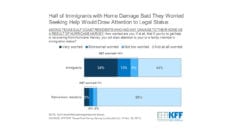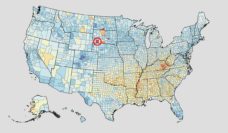Growing, consistent evidence shows that poverty during the early years of a child’s life harms cognitive and language development with lasting adverse consequences. Longitudinal studies indicate that children who grow up poor generally start school well behind their non-poor peers academically, and it is challenging for them to catch up in later years.
Since the 2000s, the US child poverty rate has held steady at 20%, with higher rates among racial minorities and children of foreign-born residents. More than one-third of children in the United States experience poverty for at least one year during childhood, and nearly 15% of these endure poverty lasting at least five years. In addition, businesses have begun adopting irregular or on-call work practice in recent years, leading to growing volatility in family socioeconomic status due to irregular work schedules and frequent job changes.
Studies have found that immigrant families and children, particularly those of Mexican origin who are the largest immigrant population in the United States, are more likely than other children in the United States to be exposed to unstable household income and deep and longer-spell poverty. The US Census projects that, by 2040, children with foreign-born parents will comprise about 50% of America’s youth.
Depth of poverty, frequency of changes in family economic conditions, and duration of spells of poverty can vary greatly and thus affect each child’s life and experience differently.
Importantly, children’s poverty experiences are diverse and evolve over time. Depth of poverty, frequency of changes in family economic conditions, and duration of spells of poverty can vary greatly and thus affect each child’s life and experience differently. My colleague and I analyzed data from a large and nationally representative cohort of children, the Early Childhood Longitudinal Study-Kindergarten (ECLS-K), who entered kindergarten in 1998 and 1999 to examine how multidimensional poverty might be associated with the academic trajectories of children of immigrants during their first nine years of schooling.
We found that poverty, particularly deep, volatile, and long-spell poverty was associated with lower academic performance. We also found that children of immigrants were doing as well as, if not better than, children with native-born parents in certain areas (e.g., math). Children of immigrants were, however, particularly vulnerable to deep and unstable socioeconomic circumstances. On one hand, children of immigrants performed worse at kindergarten entry than their peers with native-born parents in the face of extreme, volatile, and long-spell poverty, which may speak to the immigrant risk hypothesis documenting the disadvantages associated with limited socioeconomic resources (e.g., financial access, family asset) available to immigrant families.
In many cases, children of immigrants had significantly faster paces of learning, particularly in math, closing the gap with their corresponding peers with native-born parents by eighth grade despite facing extreme, volatile, and long-spell poverty.
We also found that children of immigrants did not always lag farther behind during the first nine years of schooling. In many cases, children of immigrants had significantly faster paces of learning, particularly in math, closing the gap with their corresponding peers with native-born parents by eighth grade despite facing extreme, volatile, and long-spell poverty. This finding may be explained by the immigrant paradox hypothesis suggesting that children of immigrants are more resilient to adverse circumstances than their native-born peers. Such resilience may have to do with their family environment such as higher parental educational expectations that help offset the adverse effects associated with poverty.
These findings suggest patterns of poverty should be considered when formulating policies and programs directed at children of immigrants. For example, to determine appropriate subsidy levels and services needed by children and families, policymakers need detailed data about the depth and the duration of family poverty. In addition, the results show that child development suffers when family income fluctuates. Thus, employment policy limiting on-call and unstable parental work hours could help guarantee predictable wages and help ensure children’s optimal development.
Feature image: berkay/iStock













